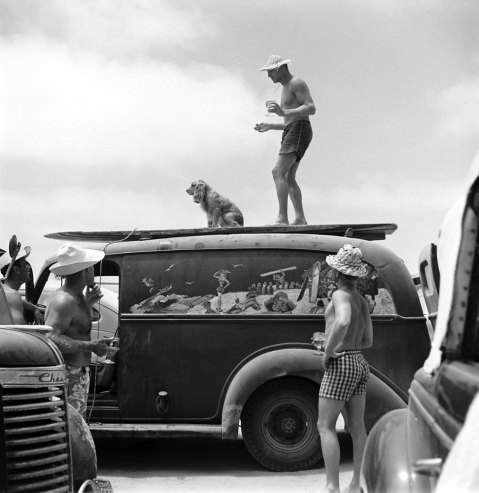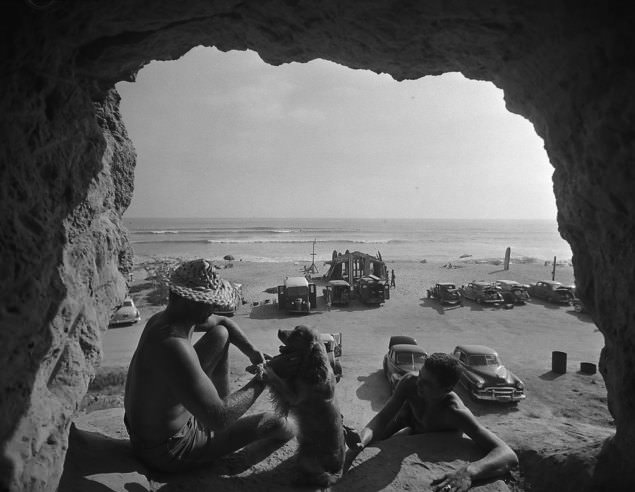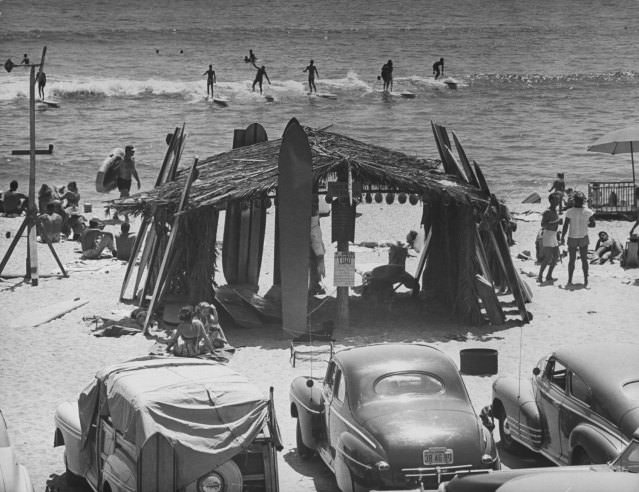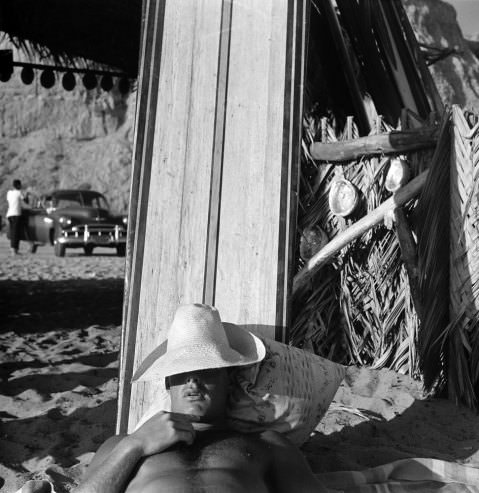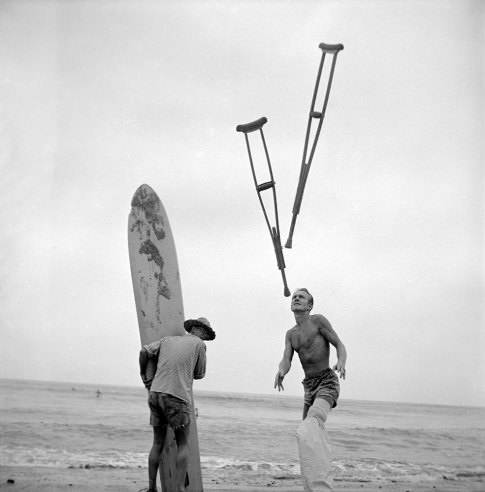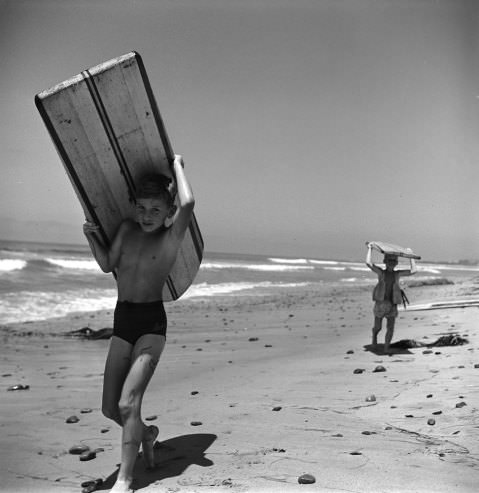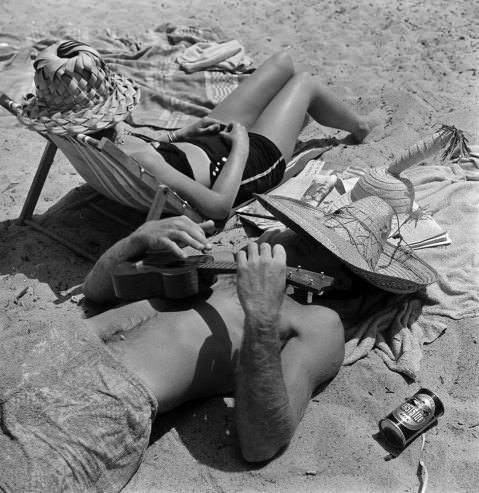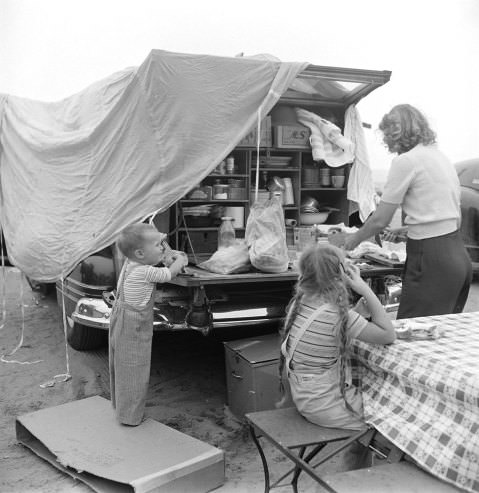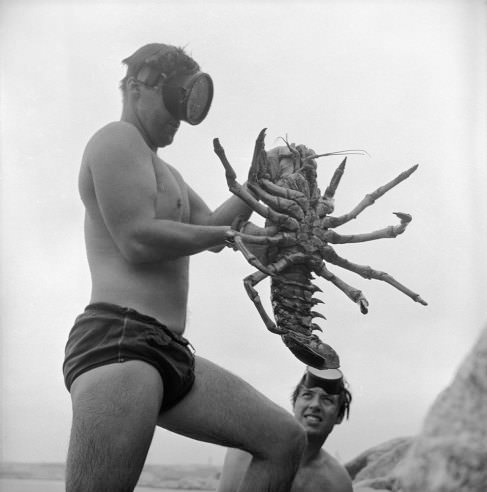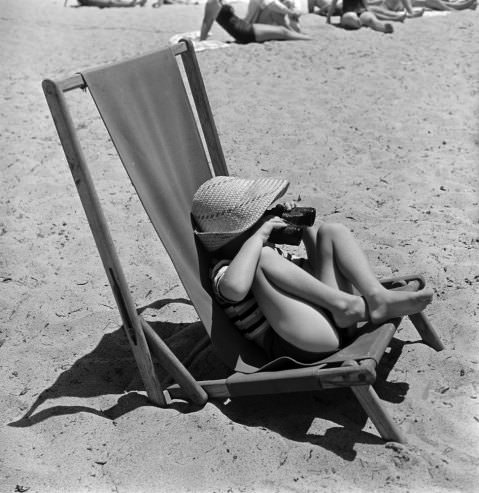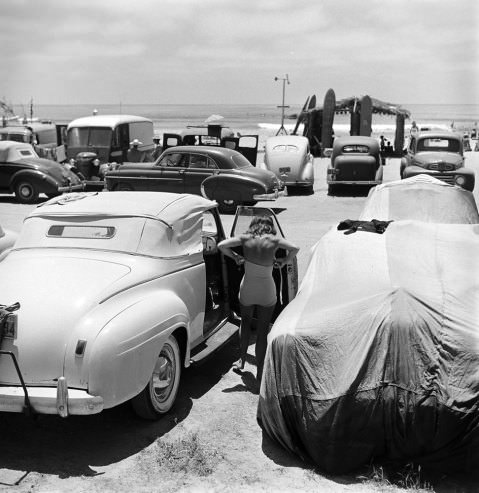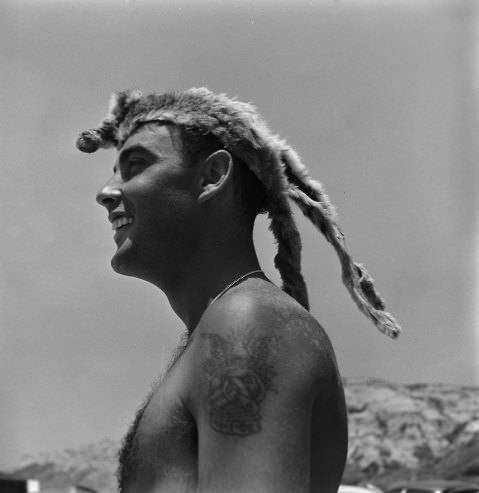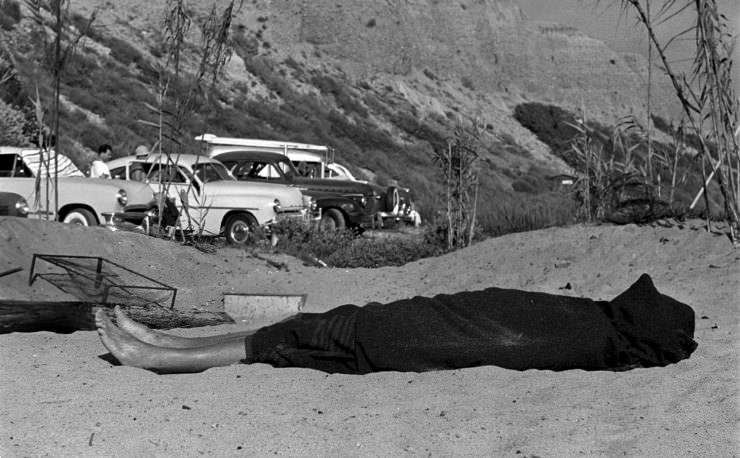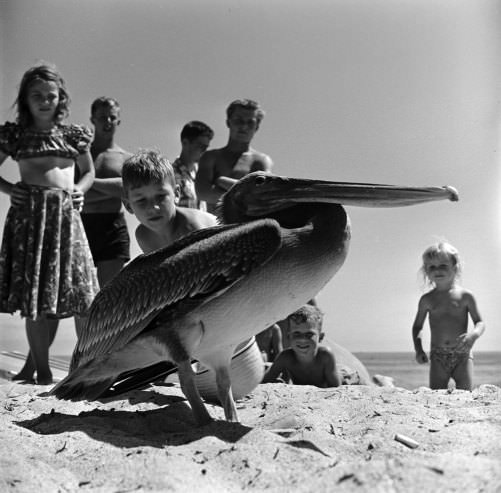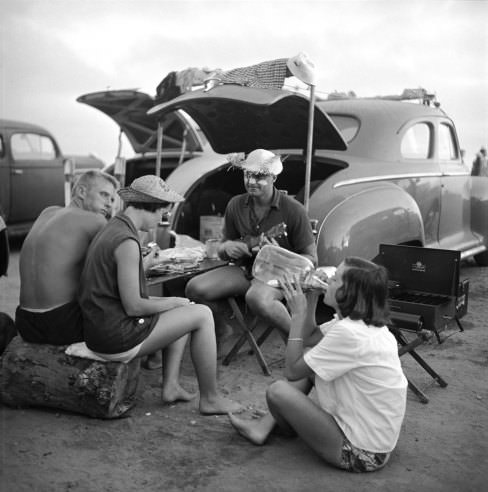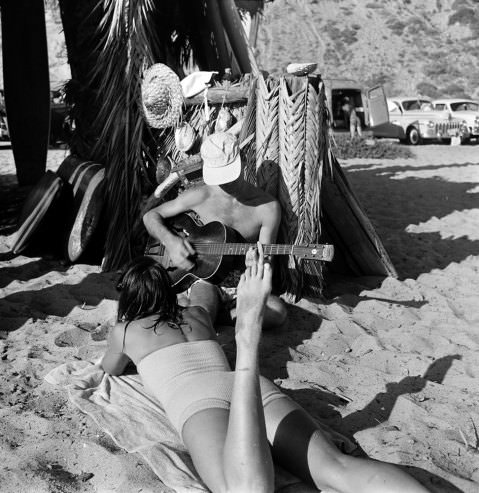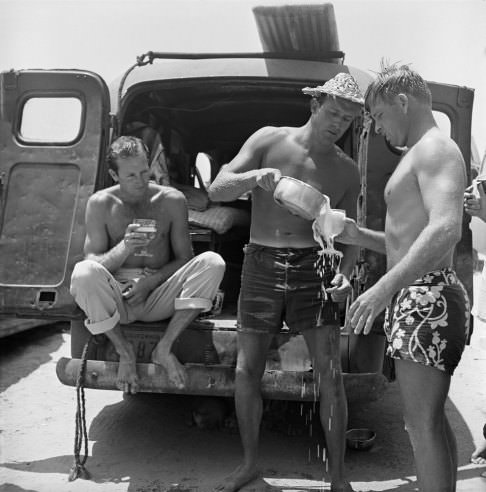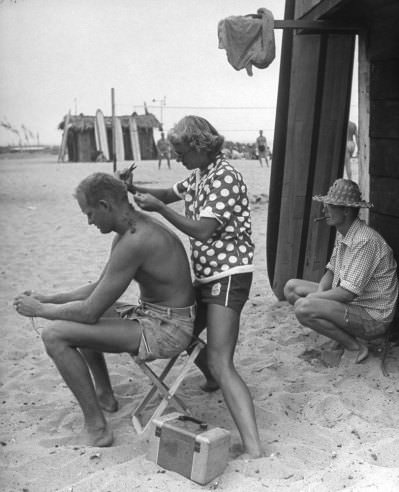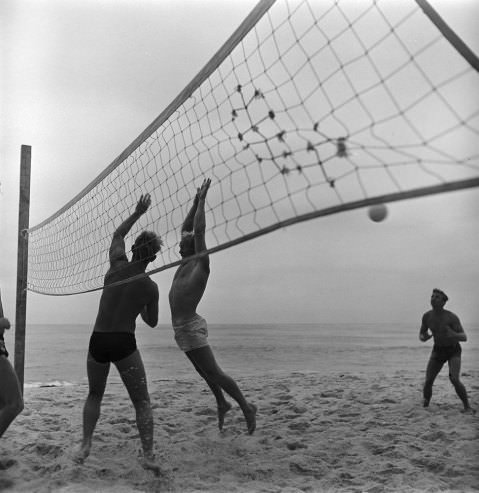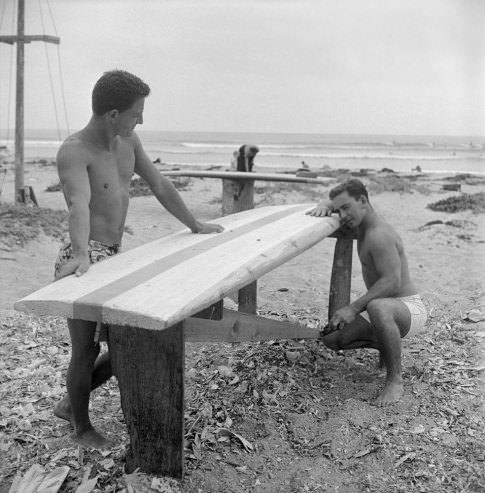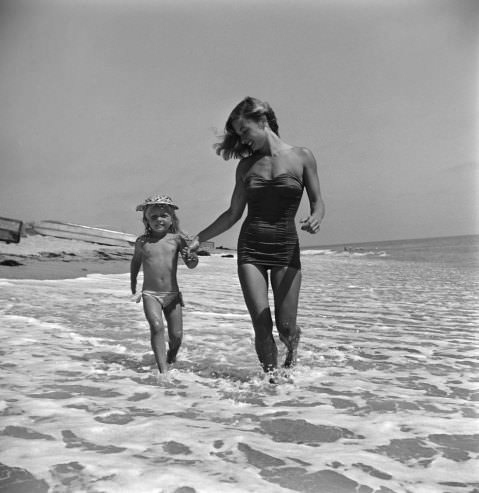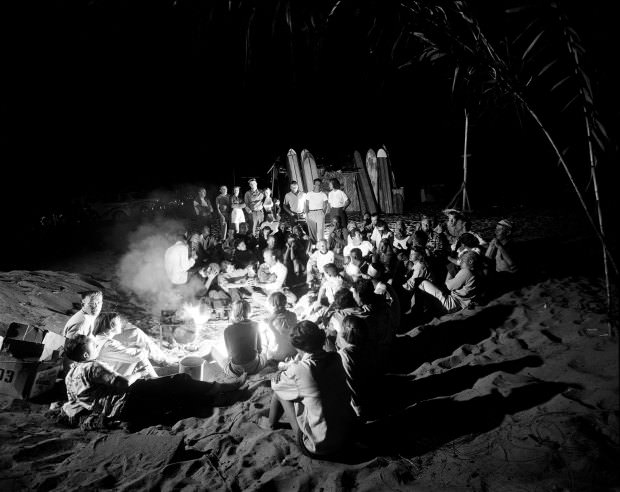San Onofre beach in the 1950s was a special place along the Southern California coast. It was known for its gentle waves and relaxed atmosphere. Before the large power plant was built, the coastline had a more natural look, with bluffs and open areas near the beach.
This beach was a popular spot for people who loved the ocean, especially surfers. In the 1950s, surfing was growing in popularity, and San Onofre was considered a classic surfing destination. The waves here were generally softer and easier to ride than at some other spots. This made it a great place for surfers of different skill levels, from beginners to experienced riders using the longer, heavier boards common at that time.
The culture at San Onofre in the 1950s was very laid-back and friendly. It felt like a community of beachgoers and surfers. People would spend long days at the beach, often with their families and friends. They drove their cars, including classic woodie station wagons, right down to the sand. They set up simple camps with tents or just laid out blankets and chairs.
Activities at the beach centered around the water and the sand. Surfing was the main draw, with groups of surfers riding the waves and sharing the stoke. People also swam, played in the sand, and simply relaxed by the ocean. It was a place to escape the busyness of everyday life and enjoy the natural beauty of the coast.
Read more
The atmosphere was casual and unpretentious. There was no boardwalk with shops or loud attractions. It was about the simple pleasures of the beach. People dressed in swimwear typical of the 1950s. Men wore board shorts, and women wore one-piece swimsuits or modest two-piece styles. Beach towels and umbrellas were simple and functional.
San Onofre had a reputation as a place where the aloha spirit of surfing, borrowed from Hawaii, was alive. Respect for the waves and for other surfers was part of the culture. It was a place where generations of surfers learned to ride waves and where a strong sense of community formed around the shared love for the ocean.
The beach provided a natural playground. The waves rolled in predictably, offering long rides. The wide sandy areas were perfect for spending hours under the California sun. Even people who did not surf enjoyed watching the riders and being part of the beach scene. San Onofre in the 1950s was defined by its accessible waves, its welcoming community, and a simple, pure beach lifestyle that felt like a true escape.


